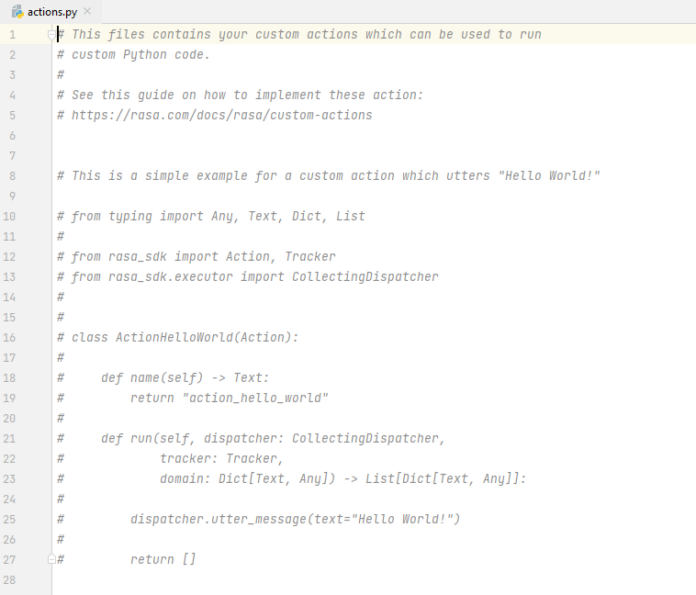The java.net.SocketOption is a socket option that is connected with a socket, as the set of channels packages is java.nio.channels.NetworkChannel that this interface has defined the setOption as well as the getOption methods to set and query’s the channels within its Socket Options.
--> java.net Package
--> SocketOption Class
This java.net.SocketOption class allows end-user to generate the socketOptions objects that are useful in invoking all fundamentals socket operations We can do networking operations such as sending, reading data and transferring, closing to connections, And Each of these SocketOption objects is created using with java.net.SocketOption class has invoked perfectly with one remote host and for connecting to another level host, therefore, we won’t generate the new object for it.
Syntax: Importing SocketOption class from java.net package
import java.net.SocketOption;
SocketOption class is invoking a stream SocketOption and which is connected to the simplified port number and port addressed as this SocketOption class is used for the generation of the socket and is connecting to the similar remote address on the accessible remote ports that are in javax.net to use.
| Method | Action Performed |
|---|---|
| name() | Returns the name of the SocketOption to it. |
| type() | Returns the type of the socket option value to it. |
Uses of Interfaces- java.net.SocketOption Class
Packages that Use the SocketOption Class
| Package | Description |
|---|---|
| java.net | This will feature the classes for invoking networking applications. |
| com.sun.nio.sctp | A Java API for invoking the Streaming Control Transporting Protocols |
| java.nio.channels | This is defining the channels as well as connections to sets of channels that create performing I/O operations, like as files and sockets, and defines selectors and for multiplexed thus non-blocking I/O operations. |
| jdk.net | This jdk.net has Platform specified sockets options similar to the java.net and java.nio.channels socketOption classes |
Uses of SocketOption Class Of java.net Package
| Modifier and Type | Field | Description |
|---|---|---|
| static final SocketOption<NetworkInterface> | StandardSocketOptions.IP_MULTICAST_IF | The networking interface for this Internet Protocol (IP) is in the multicasted datagrams |
| static final SocketOption<Boolean> | StandardSocketOptions.IP_MULTICAST_LOOP | Loopbacking of Internet Protocol (IP) is in multicasted datagrams |
| static final SocketOption<Integer> | StandardSocketOptions.IP_MULTICAST_TTL | the time-to-live in SocketOption<Integer> is for the Internet Protocol (IP) is also in multicasted datagrams |
| static final SocketOption<Integer> | StandardSocketOptions.IP_TOS | The Type of Services in SocketOption<Integer> (ToS) octeting within Internet Protocol (IP) header |
| static final SocketOption<Boolean> | StandardSocketOptions.SO_BROADCAST | Giving permission to transmission of broadcasting datagrams |
| static final SocketOption<Boolean> | StandardSocketOptions.SO_KEEPALIVE | this will keeping the connection always alive |
| static final SocketOption<Integer> | StandardSocketOptions.SO_LINGER | it will Linger within on close if data is store in it |
| static final SocketOption<Integer> | StandardSocketOptions.SO_RCVBUF | this will received a buffer by size of its socket |
| static final SocketOption<Boolean> | StandardSocketOptions.SO_REUSEADDR | it is a reusable addresses |
| static final SocketOption<Boolean> | StandardSocketOptions.SO_REUSEPORT | it is a reusable port |
| static final SocketOption<Integer> | StandardSocketOptions.SO_SNDBUF | sending a buffer by size of sockets |
| static final SocketOption<Boolean> | StandardSocketOptions.TCP_NODELAY | it will terminating the Nagle algorithm |
Uses of SocketOption within the java.nio.channels
Methods in java.nio.channels has returning types within the arguments of type with SocketOption
| Modifier and Type | Method and Description |
|---|---|
| Set<SocketOption<?>> | Returning the sets of the socket having options are supported by its modifier type channels |
Methods in java.nio.channels within the parameters of type with SocketOption
| Modifier and Type | Method and Description |
|---|---|
| <T> T |
NetworkChannel.getOption(SocketOption<T> name) throwing the value of SocketOption |
| abstract <T> DatagramChannel | DatagramChannel.setOption(SocketOption<T> name, T value) |
| abstract <T> SocketChannel | SocketChannel.setOption(SocketOption<T> name, T value) |
| abstract <T> AsynchronousServerSocketChannel | AsynchronousServerSocketChannel.setOption(SocketOption<T> name, T value) |
| abstract <T> ServerSocketChannel | ServerSocketChannel.setOption(SocketOption<T> name, T value) |
| <T> NetworkChannel |
NetworkChannel.setOption(SocketOption<T> name, T value) this will setting up the values of SocketOption |
| abstract <T> AsynchronousSocketChannel | AsynchronousSocketChannel.setOption(SocketOption<T> name, T value) |
Implementation: Java Examples for a SocketOption class Demonstration
A. For the Server-Side
Java
// Java Program to Illustrate SocketOption Class// Importing required classesimport java.io.*;import java.net.*;import java.net.SocketOption *;// Classpublic class MyServers { // Main driver method public static void main(String[] args) { // Try block to check for exceptions try { // Creating object of class inside main() method ServerSocket aa = new ServerSocket(6666); // Setting up an connection SocketOption sock = aa.accept(); // Initializing an input stream DataInputStream disc = new DataInputStream(s.getInputStream()); String str = (String)disc.readUTF(); System.out.println("message= " + str); // Closing the socket // using close() method ss.close(); } // Catch block to handle exceptions at runtime catch (Exception c) { // Display exception along with line number System.out.println(c); } }} |
Output: On the Client
B. For the Client-Side
Java
// Java Program to Illustrate SocketOption Class// Importing required classesimport java.io.*;import java.net.*;import java.net.SocketOption *;// Classpublic class MyClients { // Main driver method public static void main(String[] args) { // Try block to check for exceptions try { // Initializing the SocketOptions SocketOption soc = new SocketOption("localhost", 6666); DataOutputStream d = new DataOutputStream( soc.getOutputStream()); // Display message only d.writeUTF("Hello GFG Readers!"); d.flush(); // closing that enabled DataOutputStream d.close(); // Closing the sockets soc.close(); } // Invoking an Exception in running time // Catch block to handle exceptions catch (Exception e) { // Display message only System.out.println(e); } }} |
Output: On the server


